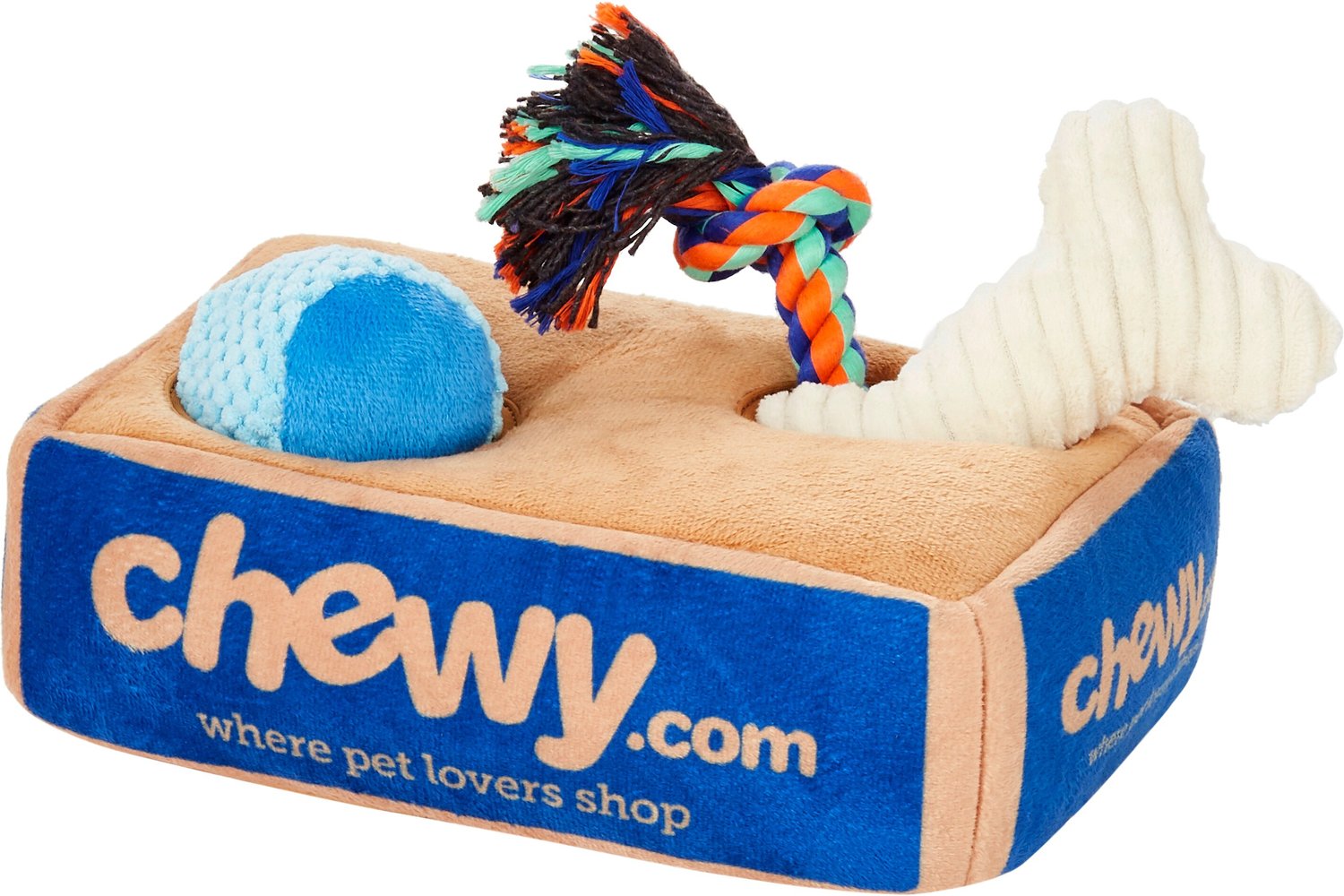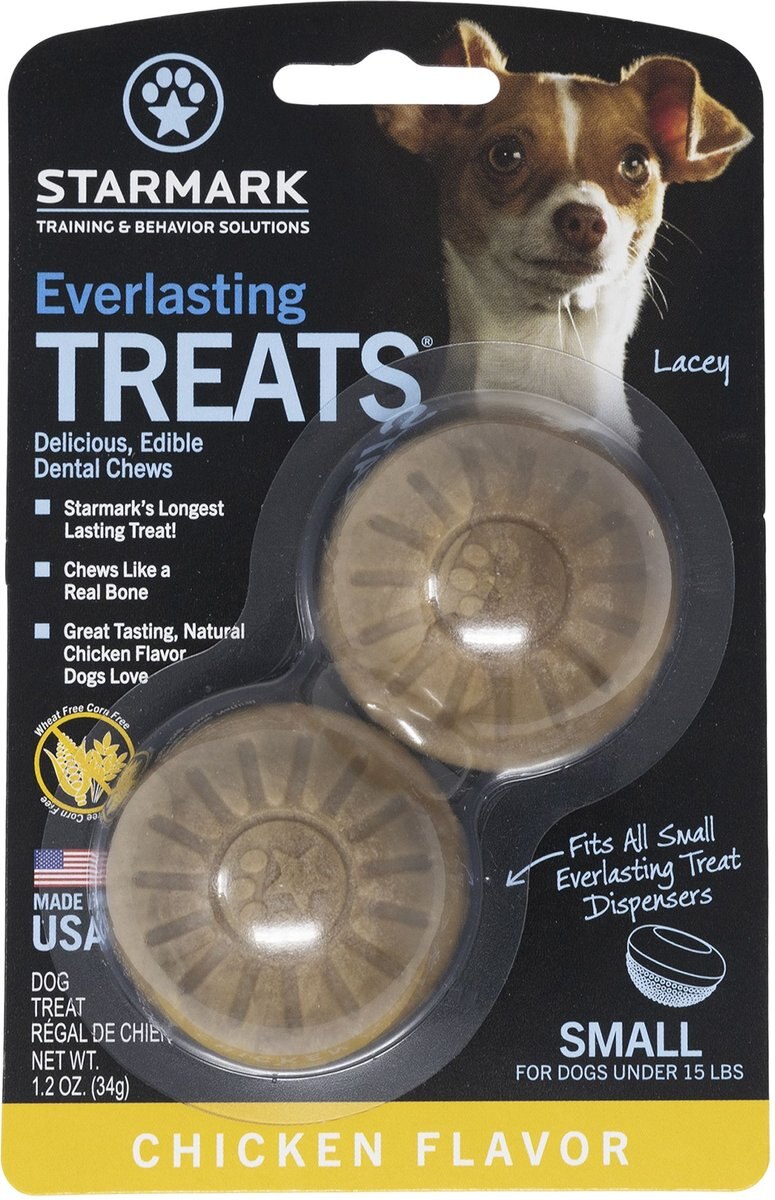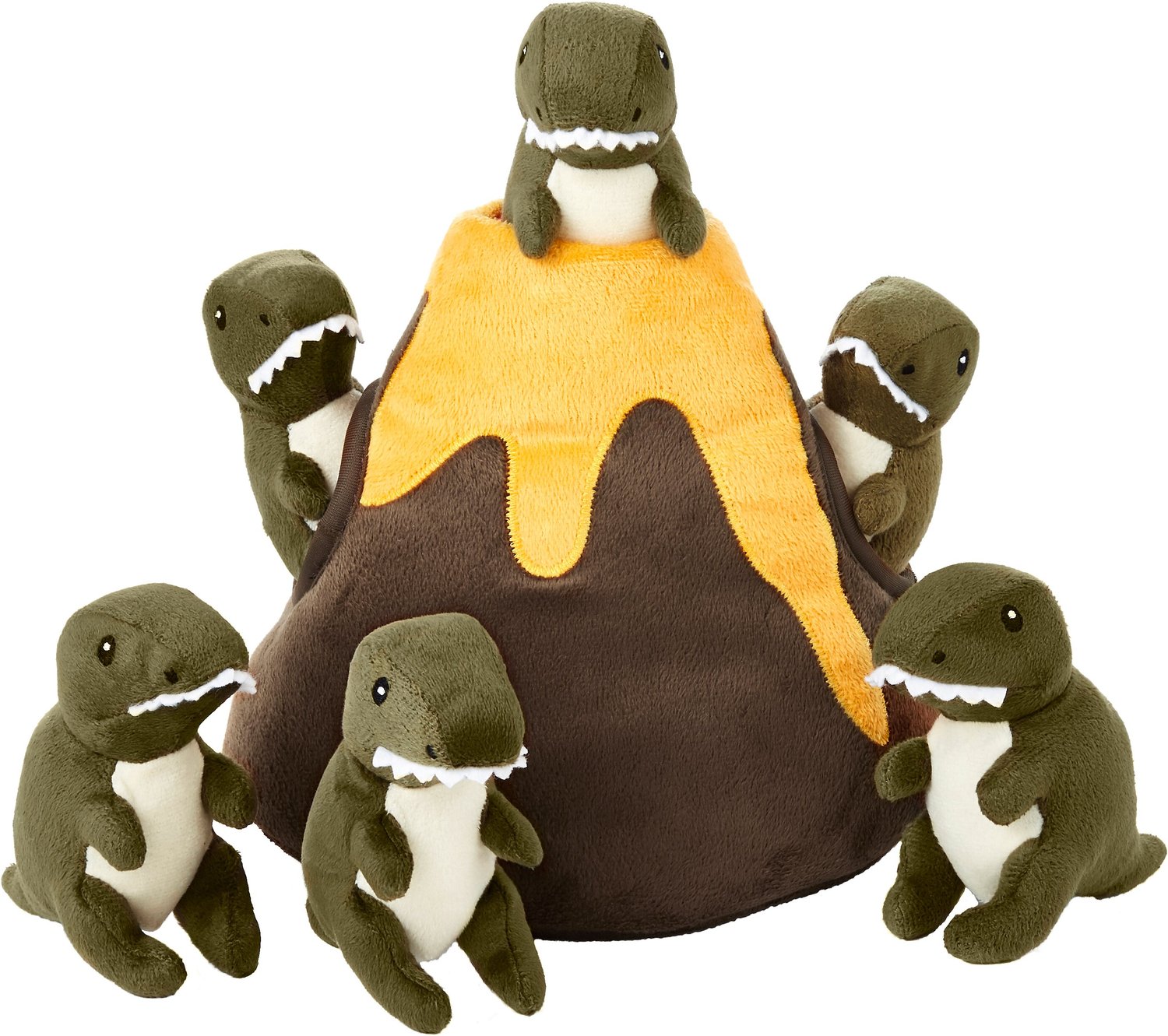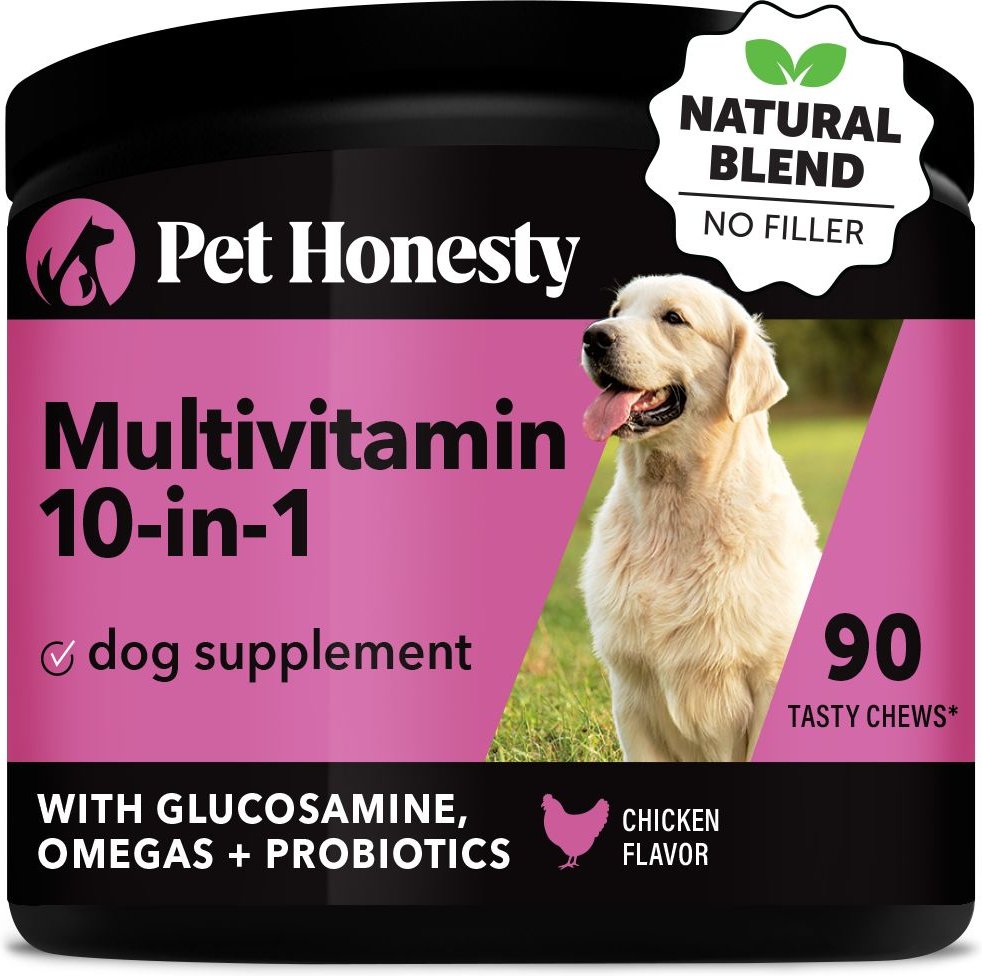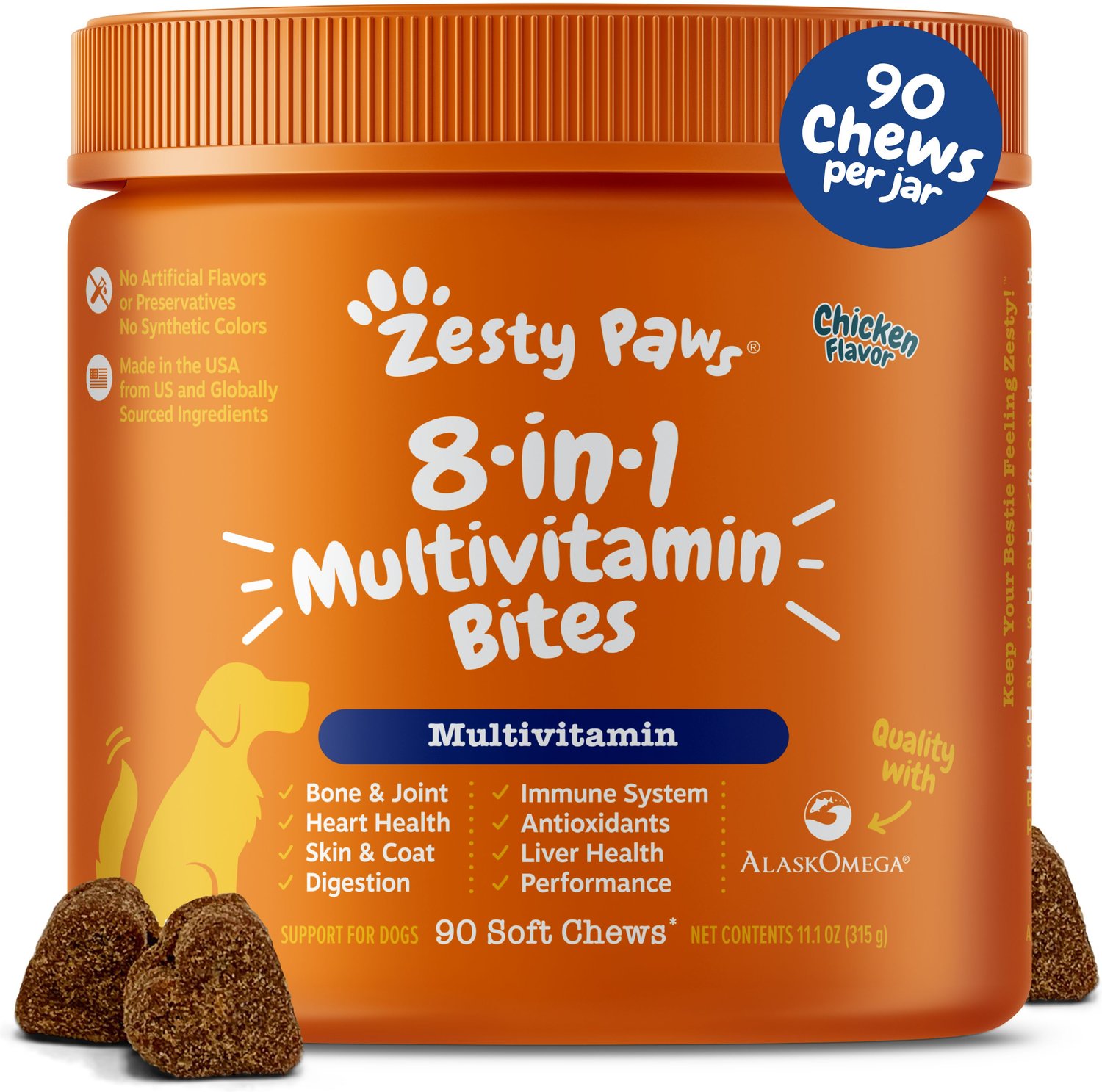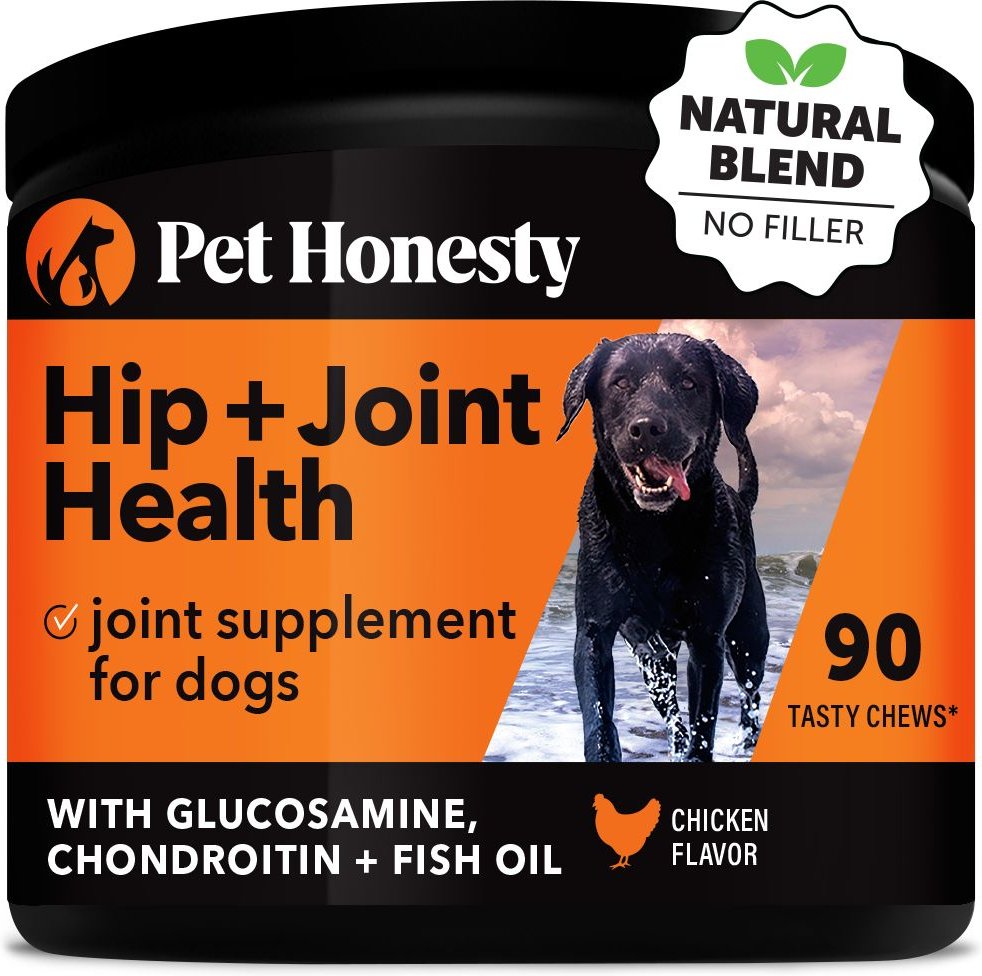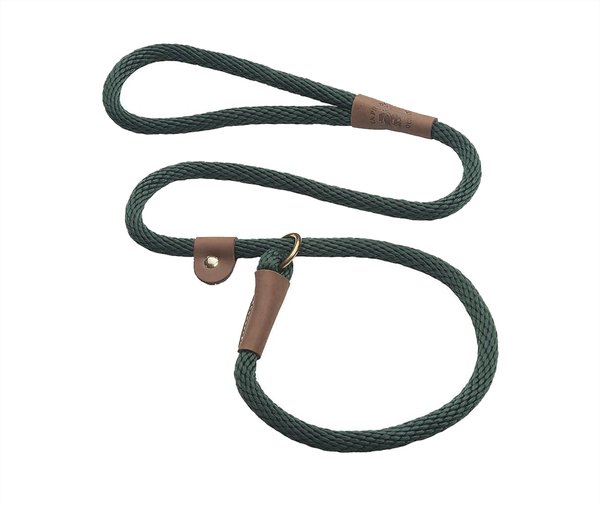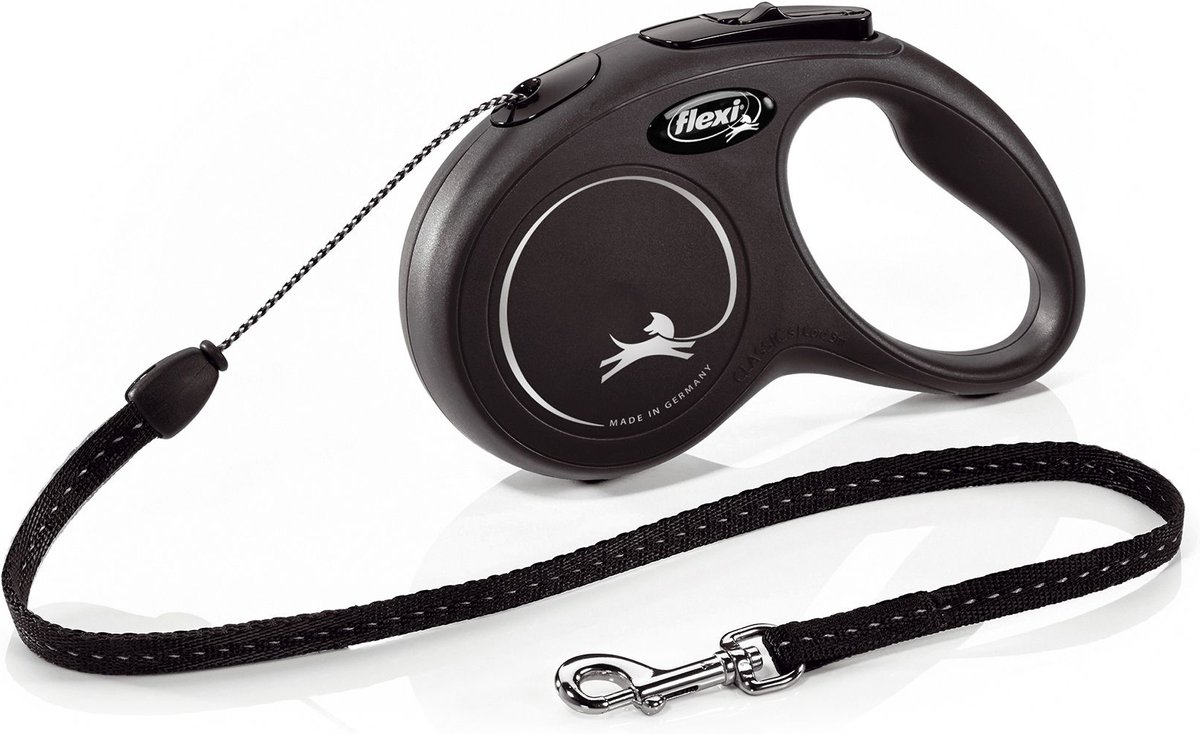There are several bulldog breeds around the world, some of which went extinct a while ago. However, breeders wanted to recreate the lost Bulldog—a breed stronger than others—and were successful in doing so. Today, we call it the Victorian Bulldog.
The Victorian Bulldog is a rare breed as it has not been long since breeders created the mix. As adorable as it looks, the Victorian Bulldog is a much healthier and robust dog compared to other Bulldog breeds. Let’s dig further about the unique breed in this article—history, origin, temperament, grooming, health, and much more.
History and Origin of the Victorian Bulldog
It all began when a breeder, Ken Mollet, decided to revive the old-times Bulldogs that were strong, robust, and comparatively healthier than the Bulldogs of that time. The breeding program began in London in 1985 with several attempts made towards that end. After years passed and there were no visible results, Graham Woods and Ken Mollett’s brother Derek, both early partners in the program, gave up and pursued other goals while Ken persisted in achieving the desired results.
He decided to use the Bull-breeds that were already legally registered with the Kennel Club of Great Britain and went on to cross English Bulldog, Bull Mastiffs, Bull Terriers, and Staffordshire Bull Terrier. The goal Ken had in mind was to carefully select the best Bull-breeds available at that time and it is no hidden fact that he was successful in doing so. He set out to recreate the dog depicted in Victorian times using old photographs, statues, written descriptions, and engravings. Inspired by the zeitgeist of the Victorian era, he labeled the dog as the Victorian Bulldog.
To date, the type is fixed and the Victorian Bulldog is regularly bred.
Unfortunately, As the Victorian Bulldog became popular, other breeders began to develop their own strains of Bulldogs and called them Victorian Bulldogs, even though the dogs were not related to Mollett’s mix at all. Some Victorian Bulldogs are simply first- or second-generation crossbreeds.
Before we dig more about the Victorian Bulldog, let us get an overview of the ancestors—English Bulldog, Bull Mastiffs, Bull Terriers, and Staffordshire Bull Terrier—so you can get a better understanding of their temperament, diet, care, and exercise requirements. The Victorian Bulldog has four parents since the breeders wanted a perfect Bulldog, one that would feature the most dominant qualities found in its parents. It is extremely important to understand the Victorian Bulldogs’ parents as they inherit everything from them.
The English Bulldog
History
The English Bulldog originated in England in the 1200s and was used for bull-baiting. After a strict ban, people diverted towards “Ratting” and eventually to dogfighting as it was easily hidden from the law. Such illicit activities required quicker and stronger dogs hence gamblers created a mix of Bull Terrier and Staffordshire Bull Terrier—the Bulldog. Eventually, when bullbaiting went obsolete, the bulldogs faced extinction but were later transformed to companion dogs from brawlers by bulldog enthusiasts.
Victorian Bulldog
Temperament: Courageous, friendly, dignified, protective, and affectionate but can be stubborn at times
Size: Male Adults: 50 pounds
Female Adults: 40 pounds
Height:12 – 15 inches
Keep in mind that if you’re willing to own the Victorian Bulldog, he might inherit these traits from its Bulldog parent. As all dogs are different, there are no fixed traits inherited by the offspring.
The Bull Mastiff
History
The Bullmastiff was developed in the mid 19th century, most likely around 1860, by English gamekeepers who needed a large and fearless dog with the speed to track down poachers and the strength to restrain them. They experimented with a lot of breeds to get the perfect dog but the one that perfectly fitted their needs was the Mastiff and Bulldog’s cross—the Bull Mastiff.
Victorian Bulldog
Temperament: Courageous, friendly, dignified, protective, and affectionate but can be stubborn at times
Size: Weight:100 – 130 pounds
Height:24 – 27 inches at the shoulder
The Bull Terriers
History
The Bull Terriers were developed in the 19th century as fighting dogs who later became fashion dogs. Nowadays, you can see them as family dogs. They were first seen around 1835 and are the result of a cross between a Bulldog and the now-extinct white English Terrier.
Victorian Bulldog
Temperament:riendly, extrovert, playful, courageous, possessive, can sometimes be difficult to housetrain
Size: Male55 – 65 pounds
Females: 45 – 55 pounds
Height: 21 – 22 inches at the shoulder
Staffordshire Bull Terrier
History
In 1835, the first Staffordshire Bull Terrier Club was formed in England, and a breed standard was written soon after. In the United States, the Staffordshire Bull Terrier was primarily used as a family companion, and the breed was not recognized by the American Kennel Club until 1975. Tinkinswood Imperial was the first Stafford registered with the AKC. In 1974, the Staffordshire Bull Terrier Club of America was established.
Victorian Bulldog
Temperament:Loving, friendly, courageous, intelligent, great care-takers, Not very possessive over materialistic things, protective about family
Size: Male28 – 38 pounds
Females: 24 – 34 pounds
Height: 14 – 16 inches at the shoulder
As we have discussed brief overviews of the Victorian Bulldogs’ ancestors, we can now better understand the breed as it mostly inherits the looks, personality traits, size, and other factors from the parents. We have already gone through a detailed history of the Victorian Bulldog, let’s discuss its temperament, size, health, and other factors to see how similar or different they can be from the parents’ breeds.
Temperament of the Victorian Bulldog
The Victorian Bulldogs are known to be friendly and loving. They can be excellent and super affectionate pets and would love it if you reciprocate. Victorian Bulldogs are also very lively and energetic—they are usually up for any kind of activities and adventures, even snuggling up on the couch.
Even though these dogs look fierce and grumpy, they are very loving and have a touch of kindness. Their playful personalities, robust builds, and patience around children make them excellent playmates.
However, keep in mind that the Victorian Bulldogs require a lot of attention, time, and affection—not getting enough of these would cause separation anxiety in them. Another positive trait of the Victorian Bulldogs is that they don’t bark excessively—unless something triggers them. It is extremely difficult to stop them from barking if they start once, however. Other than that, these dogs are vocal and very confident. If you are willing to own one, we would suggest you go for it.
Two Reasons Why You Should Get a Victorian Bulldog
Victorian Bulldogs Are Rare
It is hard to find these dogs easily but if you are fortunate enough to get your hands on them, we would suggest you take the chance to the fullest as Victorian Bulldogs are one of the best breeds to have as pets.
They Are Good Watchdogs
Victorian Bulldogs are well known for their loyalty towards their owners, which, when combined with their awareness of their surroundings, makes them excellent watchdogs. While Victorian Bulldogs can be very friendly with strangers on their first meeting, they will be very protective of their home and family if someone is lurking around the property ready to cause harm.
They are intelligent enough to easily differentiate between a friendly stranger and someone willing to cause harm. Victorian Bulldogs are more than capable of defending themselves against intruders. Many owners report that once the Victorian Bulldog becomes a devoted member of their household, they are one of the best watchdog breeds available.
Two Reasons Why You Should Not Get a Victorian Bulldog
They Are Not Hypoallergenic
Just like its English Bulldog parent, Victorian Bulldogs are not hypoallergenic hence they are not a good choice for people prone to pet allergies. Even though they are not heavy shedders, it is best to avoid taking any risks. If you are susceptible to pet allergies, we highly advise you to avoid opting for the Victorian Bulldog.
They Are Couch Potatoes
Victorian Bulldogs are non-working dogs with moderate activity levels. When they’re at home, they’d rather be couch potatoes. However, if you want them to be happy, healthy, and thrive, you must provide them with exercise daily. If you are an active person with a super-fast routine, these dogs are not a suitable option for you. You have to thrive them to exercise and having a busy routine would neglect the necessity.
Weight, Height, and Life Expectancy
Victorian Bulldog
Height : 16 – 19 inches
Weight: 55 – 75 pounds
Coat Colors: Red, fawn, brindle, pied
Life Span: 12 – 14 years
Suitable For: Families with children, homes with big yards, singles
Temperament: Loving, friendly, confident, courageous, intelligent
Victorian Bulldog Puppies
Victorian Bulldog puppies are rambunctious and playful, but they mature quickly into calm, content adults. They are happy to play with anyone if encouraged, but they are also content to simply be by your side. If you are willing to opt for a Victorian Bulldog puppy, there are certain factors you must keep in mind beforehand. For instance, ensure that you get your puppy from a reputable and established breeder. Some breeders cannot differentiate between bulldog breeds and are mislabeling second and third-generation bulldogs as Victorian Bulldogs.
Additionally, professional breeders would have all the required medical history of the parents’ breeds of the Victorian Bulldog. This would allow you to minimize the risks of dealing with future genetic health complications. On average, a Victorian Bulldog puppy would cost you $1500 to $3000 but can even rise to $5000 due to the rarity of the breed.
Victorian Bulldog Puppies Growth Chart
| Growth Chart |
| Age (Months) | Weight (lb) |
| 3 | 15 – 20 lbs. |
| 6 | 30 – 40 lbs. |
| 9 | 40 – 40 lbs. |
| 12 | 50+ lbs. |
| Fully Grown Adult | 55 – 75 pounds |
Training
Victorian Bulldogs are intelligent dogs with a friendly demeanor so they respond well to training. Unfortunately, because they are a Bull breed, most owners subject them to dominance training, even though the exact opposite is true. These dogs do not respond to any form of dominance or force-based training.
In fact, they respond well to reward-based training. It is best if you use a clicker to train them as they will respond well to it. Clicker training can help when teaching your dog basic commands while making the sessions enjoyable.
However, Victorian Bulldog puppies can be a little stubborn at times but you can offer them food-based rewards to make them more obedient and the sessions more encouraging. As these dogs are extremely intelligent, they would gain the benefits from puzzles games, interactive toys, and boredom blockbusters.
Additionally, keep in mind that you are not dealing with a machine. Even if you follow the training schedule strictly, your puppy will follow his feelings and urges. For this, make a few changes to compensate for your Victorian Bulldog puppy’s quirks. Puppies (and adult dogs) enjoy routine, and if your training methods are consistent, your puppy will achieve the routine he desires—and the housetraining will go more smoothly. Below we are going to discuss a few steps you can follow to train your Victorian Bulldog pup.
During The Start, Always Use The Same Door For Going In and Out of The Yard
Check that everyone in the family is using the same door. When your puppy is old enough to communicate his desire to go outside, he will always go to the same door if you use this method.
Use The Same Yard Area Every Time
Dogs mostly rely on their sense of smell so this trick would enable your puppy to detect the odor of urine and recognize that he has arrived at the right place.
Keep Your Pup Warm and Comfortable at Night
Your puppy would wake up if he feel cold, and if he does, he may need to go outside.
Feeding Time Is an Important Part of The Schedule During House Training
As your dog grows older, the idea of free-feeding — putting down the daily amount of food and leaving it for your dog to eat whenever he wants —may seem appealing to you. This is your choice, but it is highly advised that you feed scheduled meals when your Victorian Bully is a puppy and until he is housetrained. This procedure informs you when he is likely to require a trip outside. Reward him with calming treats as well if he is anxious. However, too many treats or too much variety may cause diarrhea. Bulldog puppies can’t control their diarrhea, which means you’ll have to do more cleaning.
Grooming the Victorian Bulldog
Victorian Bulldogs are generally low-maintenance—they require only moderate grooming because they shed moderately. Victorian Bulldogs have short-haired coats with fine, smooth fur that only needs to be brushed once a week, or a few times a week if you prefer. Brushing removes dead hair and skin from the coat, distributes oil throughout it, and stimulates blood flow.
Because Victorian Bulldogs do not have long coats or thick fur, you do not need a variety of brushes to completely and thoroughly brush your dog—brush from the nose to the tail. It’s best to have your dog standing when you’re brushing him. However, we do recommend you the top four brushes we have for the Victorian Bulldog.
It is no hidden fact that Victorian Bulldogs have wrinkly faces that require frequent cleaning to avoid any infections or irritations. To thoroughly clean your dog, you need to bathe him once or twice a week. Use a damp cloth, cotton balls, or baby wipes to clean the area. Baby wipes with aloe are a good option because aloe soothes and moisturizes the skin, or you can mix water and dog shampoo. If you use a shampoo, mix a tiny drop in a cup of warm water, and apply with a brush. Use a cotton ball to dab the solution onto the wrinkles. When you are done with the cleaning, make sure to thoroughly clean the skin to avoid any irritation.
|
|
Nail Trimming
Victorian Bulldogs do not require frequent nail trimming—as they wear them off naturally. However, these dogs won’t feel pain if you clip their nail, unless, you accidentally cut the quick (a tiny vein that runs through the center of the nails). It is highly advised that you start trimming the Victorian Bulldog’s nails from puppyhood so that he can get used to it over time and would not scare away from the nail trimming sessions.
Eyes, Teeth, and Ear Cleaning
Apart from cleaning the coat and trimming the nails frequently, keeping a check on your dog’s ears, teeth, and eyes is also very important. It is highly advised that you clean your Victorian Bulldog’s ears with a pH-balanced ear cleaner and use a cotton swab for it. However, be careful while doing so as inserting the swab too deep could damage the ear and lead to other complications. Repeat the steps once or twice a week.
Additionally, Brush their teeth and gums with enzyme toothpaste every day to prevent dental diseases. This aids in the prevention of tartar buildup, which causes gum disease and tooth decay.
Exercise
The victorian Bulldogs are non-working dogs which means they require moderate activity levels. They are a low-energy breed that enjoys playing but does not require a lot of exercises. You will only need to walk these puppies once or twice a day for 20 to 30 minutes. They are an ideal choice for those who live in smaller homes with small yards.
As Victorian Bulldogs are extremely intelligent, they enjoy playing games, especially with the younger members of the household. Keeping the dogs mentally stimulated will keep them from becoming bored. They would enjoy playing frisbee, chasing a ball, or even participating in brain games.
Health Issues in Victorian Bulldogs
The Victorian Bulldogs are generally healthy dogs—way healthier than the English Bulldog. However, there are certain health conditions these dogs are susceptible to, including:
Skin Problems
The Victorian Bulldogs are susceptible to skin infections and irritations such as eczema, dermatitis, swelling, and hot spots caused by bug bites and other skin irritants. Using medicated shampoo when washing their skin on a regular basis is the best way to prevent skin problems.
Obesity
These dogs are also prone to obesity as they usually overeat or are lazy to exercise. However, obesity can lead to several other health complications like hip and elbow dysplasia and breathing difficulties.
Hip and Elbow Dysplasia
The Victorian Bulldogs have the robust build of an English Bulldog, which increases their risk of joint and bone problems. Obesity also plays a role in this condition. Dysplasia occurs when the bones in the hip and elbow do not fit snugly into their respective joints. It causes pain and intolerance to exercise.
Cherry Eye
Vision problems such as the Cherry eye are common among aging dogs which appears as a bulging red bump at the eye corner. It is caused by an enlarged and prolapsing gland at the third eyelid. Even though, you can not totally stop this from affecting your Victorian Bulldog, having frequent checkups with a vet can prevent it from happening too soon.
Overheating
Just like the English Bulldog, Victorian Bulldogs are brachycephalic—skull bones are shorter giving the face and nose a pushed-in appearance. Due to this, the dog may have difficulty panting effectively while working out. This is why you must ensure that your Victorian Bulldog is not living in an environment too hot and that he is not over-exercising.
Feeding/ Food Requirements of Victorian Bulldog
When you buy a Victorian Bulldog puppy, you may have to feed him whatever the breeder recommended. However, as his lifestyle changes, you would have to make some changes to your dog’s diet as well. You would also eventually figure out if your dog is allergic to certain food items.
It does not matter how expensive or inexpensive your dog’s food is; what matters is what is going inside him. There are certain ingredients and factors you must keep in mind before opting for food packets for your pooch.
Animal-based Protein
In the first five listed ingredients of your dog food, there should be an animal-based protein source e.g chicken, beef, or lamb. One of those proteins should ideally be in the first position, as this position usually indicates the main ingredient. Dogs will eat almost anything, but because they are primarily carnivores, you must ensure that they are fed meat as the main ingredient.
Preservatives
Before opting for the perfect food for your dog, it is important to understand the preservatives included in them. Preservatives are used to prevent food from spoiling. There are two types of preservatives—natural and chemical. If you opt for natural preservative products, make sure to buy them in small quantities and store them in a cool and dark place as natural preservatives like vitamin E don’t last long. They would break down when exposed to light or air.
Manufacturers don’t have to list the pre-added preservatives in the products, however. If a product has a label “preservatives-free”, it does not mean there are no preservatives added to the food—it may already be in the products the manufacturers purchased to make dog food.
Filler
When buying dog food, another factor to consider is the filler—use to bulk up the food. Not only should the food be mostly meat rather than filler, but some dogs are allergic to certain fillers because they often contain additives that are not healthy for dogs to eat.
- Corn is a cheap filler that is commonly used in dog foods
- Wheat and soy grains are also popular, but they can cause allergic reactions
- Rice is a popular option as it causes fewer allergic reactions
What Can I Buy?
Homemade Food or Vegetables
Apart from the dry food products, you can also feed your dog with natural homemade food, fruits, and vegetables. According to the American Kennel Club, here are several items that are safe and healthy for your dog to consume—and super easy on the pocket as well.
Eggs
Eggs are absolutely safe for dogs to consume—as long as they are fully cooked. Eggs are a great source of protein that can also aid an upset stomach. However, make sure the egg is thoroughly cooked before feeding it to your dog as raw eggs can cause biotin deficiency.
Salmon
Another protein-rich source for dogs is salmon. It is completely safe, healthy, and packed with tons of good fats, and amino acids. It promotes joint and brain health and boosts the dog’s immune system. However, again, keep in mind to thoroughly cook the salmon beforehand.
Apples
Apples are an excellent source of vitamins A, C, and fiber for dogs. It is highly recommended that you add this delicious fruit to your pooch’s diet so that he can gain the maximum benefits from it. Apples are also low in protein and fat so they are perfect for adult Victorian Bulldogs.
Cucumber
Cucumbers are good for obese dogs as they are low in carbohydrates, fats, or oils and they can even boost energy levels. They are also packed with vitamins K, C, and B1, potassium, copper, magnesium, and biotin hence a perfect treat for your Victorian Bulldog.
Brussels Sprouts
Yes, Victorian Bulldogs can eat brussels sprouts as they are safe and fully loaded with nutrients and antioxidants. However, it is advised that you avoid overfeeding your bully with brussels sprouts as they can cause gas.
Carrots
Carrots are super healthy and a low-calorie snack for Victorian Bulldogs. It is rich in fiber beta-carotene—which produces vitamin A. They are also good for dogs’ dental health.
Bringing Your Victorian Bulldog Home
Buying the Perfect Bed
Before buying a bed for your Victorian Bulldog, keep in mind the size of your pooch and check for durability. Of course, the comfort of the dog is important but you don’t want to risk him destroying the bed in a matter of minutes! We have compiled a list of the dog beds you can opt for.
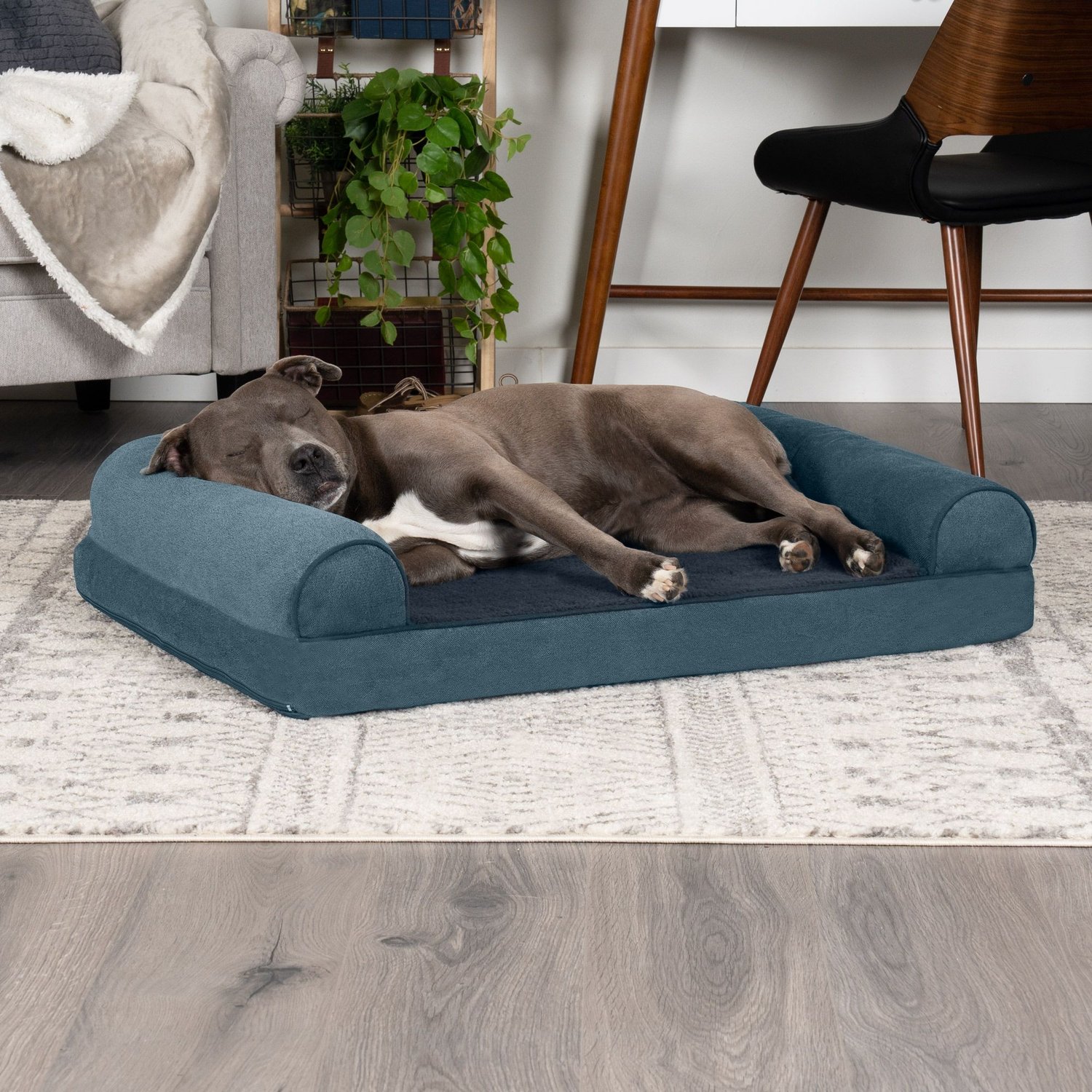
|
|
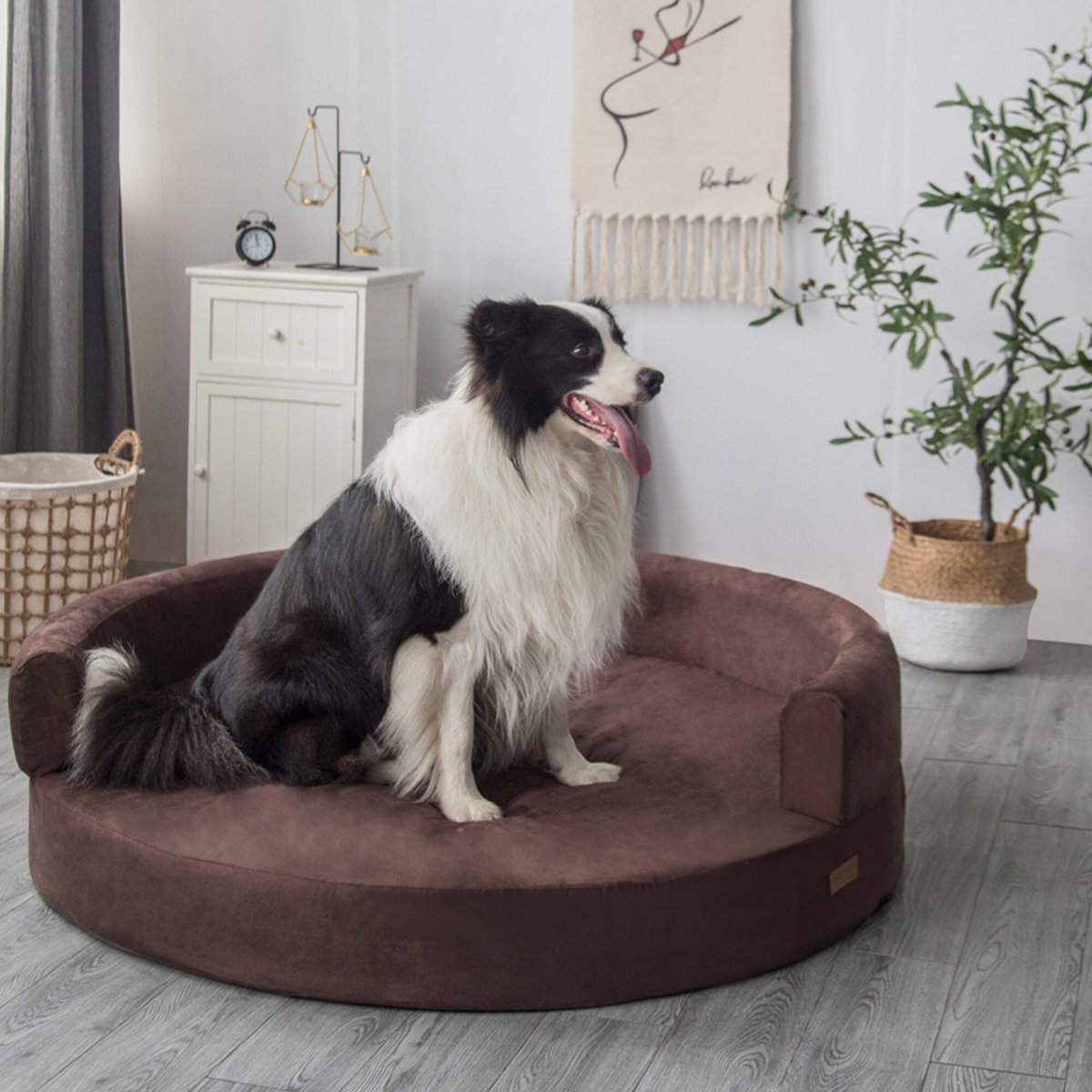
|
|
Buying Collars, Leads, and Harnesses
Collars
Collars and leads are important because they keep your dog in control when you are out in public. There are four different types of collars available in the markets—adjustable, buckle, slip, and prong. If you are wondering which one is the best for your Victorian Bulldog, we would suggest you opt for the adjustable ones. Adjustable collars are best for growing puppies as you can easily adjust them according to the size of your Victorian Bulldog. However, if you want a more permanent collar for your Victorian Bulldog, we would advise you to wait until your pup is fully grown. Here is the list of some adjustable collars you can easily opt for.
Leads
Dog leads come in a variety of sizes but the best length for training or walking is 6 feet. We would recommend you to get a 6 feet nylon lead for your Victorian Bulldog. There are leather and chain leads as well. Leather leads are a good choice as they are long-lasting and even look good on dogs. However, chain leads are horrible for dogs. It is highly advised that you avoid buying chain leads for your Victorian Bulldog as it is hard, unyielding, and bulky. Instead, check out our list of the top leads we have compiled for you.
Harnesses
As Victorian Bulldogs are heavy and bulky, we strongly advise you to avoid buying harnesses for them—choose leads and collars instead. With a harness on, you wouldn’t have control over your Victorian Bulldog, he would control you instead.
Are Victorian Bulldogs Good For Families?
Victorian Bulldogs are great with families and even kids. If you have young children in the house, the Victorian Bulldog would prove to be a right fit for your family. Similarly, these dogs are lazy and would not require too much yard space so if you live in an apartment, owning a Victorian Bulldog wouldn’t be a problem. Additionally, they are great companions, super loving and affectionate, and would do anything to protect their owners.
Do They Get Along With Other Pets?
If rightly trained and socialized at an early age, the Victorian Bulldogs can easily get along with other dogs so if you have more than one dog at home, it would not cause any hurdles for you—especially if both dogs grew alongside each other.
Male Vs. Female
The female Victorian Bulldogs are slightly smaller than the male. They weigh around 55 – 65 pounds, while the males weigh between 65 – 75 pounds. The females are also shorter than the male Victorian Bulldogs. Additionally, the males are super active and playful as compared to the females.
Vaccinating the Victorian Bulldog
Vaccinating your Victorian Bulldog is extremely important. Many veterinarians only vaccinate against distemper and Parvovirus and administer the required rabies shot—and only administer other vaccinations based on what may be required for a specific dog in a specific area. Consult your nearby vet for their methods of vaccination. Many veterinarians vaccinate young dogs or dogs that travel frequently—such as show dogs—every year whereas older or stay-at-home dogs may only be vaccinated every three years. We have inserted a table for you to better understand what dose is required at what age of the puppy.
| Puppy’s age | Required Vaccinations |
| 6 — 8 weeks | Distemper and parvovirus |
| 10 — 12 weeks | DHPP (vaccines for distemper, adenovirus [hepatitis], parainfluenza, and parvovirus) |
| 16 — 18 weeks | DHPP and rabies |
| 12 — 16 months | DHPP and rabies |
| Every 1 — 2 years | DHPP |
| Every 1 — 3 years | Rabies (as required by the law) |
Cost of The Vaccines
The cost of the vaccines depends on two factors—where you live and the type of vaccine. If you live in crowded and expensive urban areas, your vet would charge more for the vaccine as compared to a rural vet in a small town. However, on average, the cost can range between $75 – $100, including the core vaccines like DHPP (distemper, hepatitis, leptospirosis, parvo, and parainfluenza). Similarly, the rabies vaccine can cost around $15 – $20. Keep in mind that depending on the area, some animal shelters would charge less or would not charge at all.
Five Important Things to Do For Your Victorian Bulldog
Cleaning The Collars
Most dog owners neglect this factor. Washing your dog’s collar is an extremely important part of his hygiene. It is highly advised that you wash your Victorian Bulldog’s collar frequently. Use saddle soaps for leather collars and hand soap for the nylon ones. You can also use shampoo to ward off the grease. Old toothbrushes can also come in handy.
Thoroughly Washing The Dishes and Food
It is no hidden fact that just like humans, animals also need clean dishes every time they eat. Team Keeping Pet highly advises you to wash your pooch’s food bowl every time before giving him food in it. Also, Stainless steel is the best option instead of ceramic or plastic dishes as ceramic dishes may have lead-based glaze or paint and plastic dishes may become chew toys.
Forgiving His Behavior
Dogs are like humans, they make mistakes. However, punishing or yelling at them for making mistakes is not always the solution. Sometimes, it is important to forgive your pooch’s behavior and that does not mean you should give up on training them. You just need to be gentle.
Balancing the Diet
Another important factor you must keep in mind is to keep a check on your Victorian Bulldog’s diet and health. Is he eating right? Is he overweight or underweight? If so, plan his diet accordingly. Make sure your pup is consuming all the required nutrients and avoid feeding him unhealthy treats.
Exercise Frequently
Victorian Bulldogs can be lazy at times but make sure you indulge them in some kind of physical activity for 5 – 10 minutes every day. This way, they would maintain a healthy weight and lifestyle. Also, avoid over-exercising them as it may cause overheating.
Conclusion
Victorian Bulldogs can be a treat to have around. As mentioned earlier, they are super loving and affectionate and can make great family dogs. If you are planning to opt for it, we highly advise you to do so.





